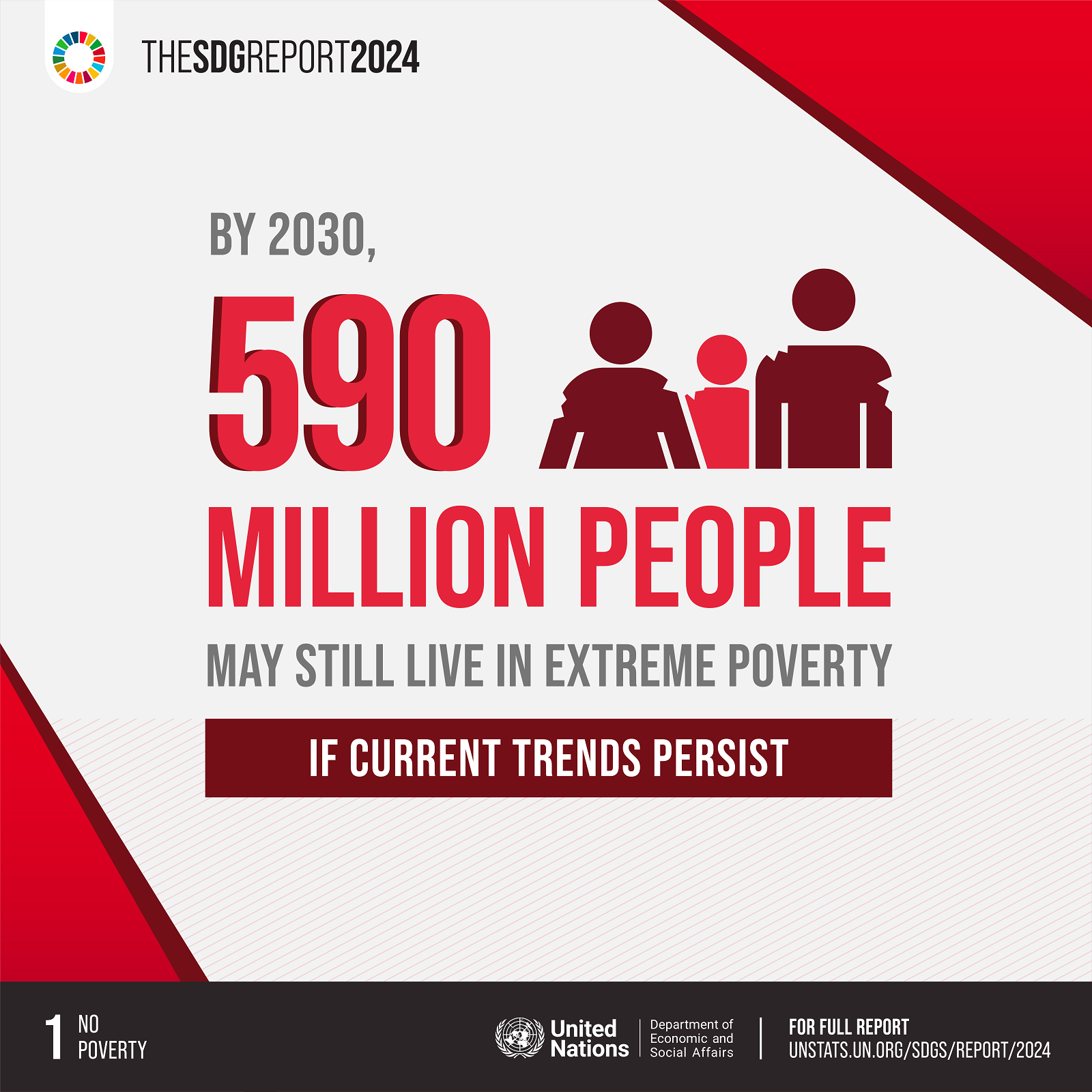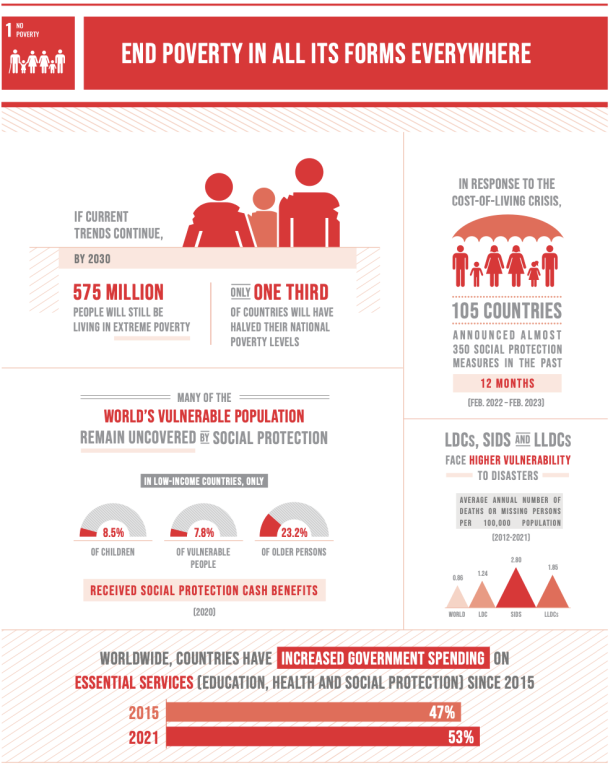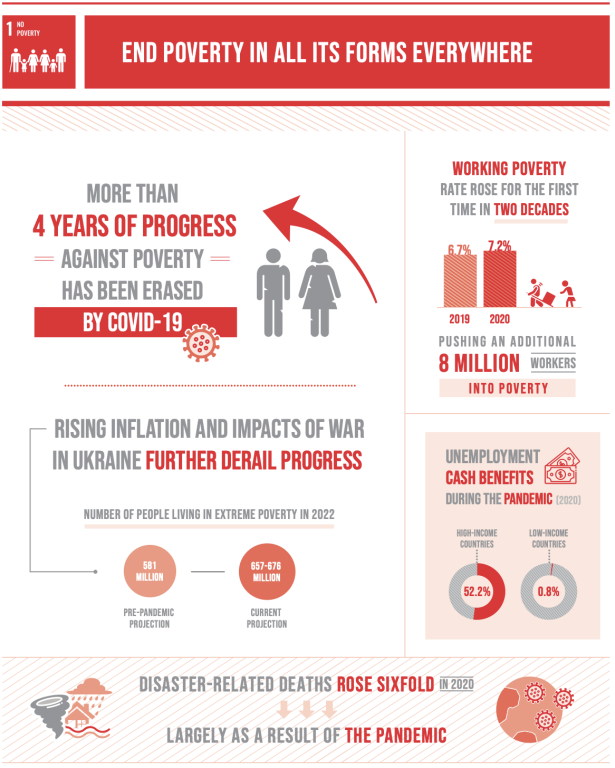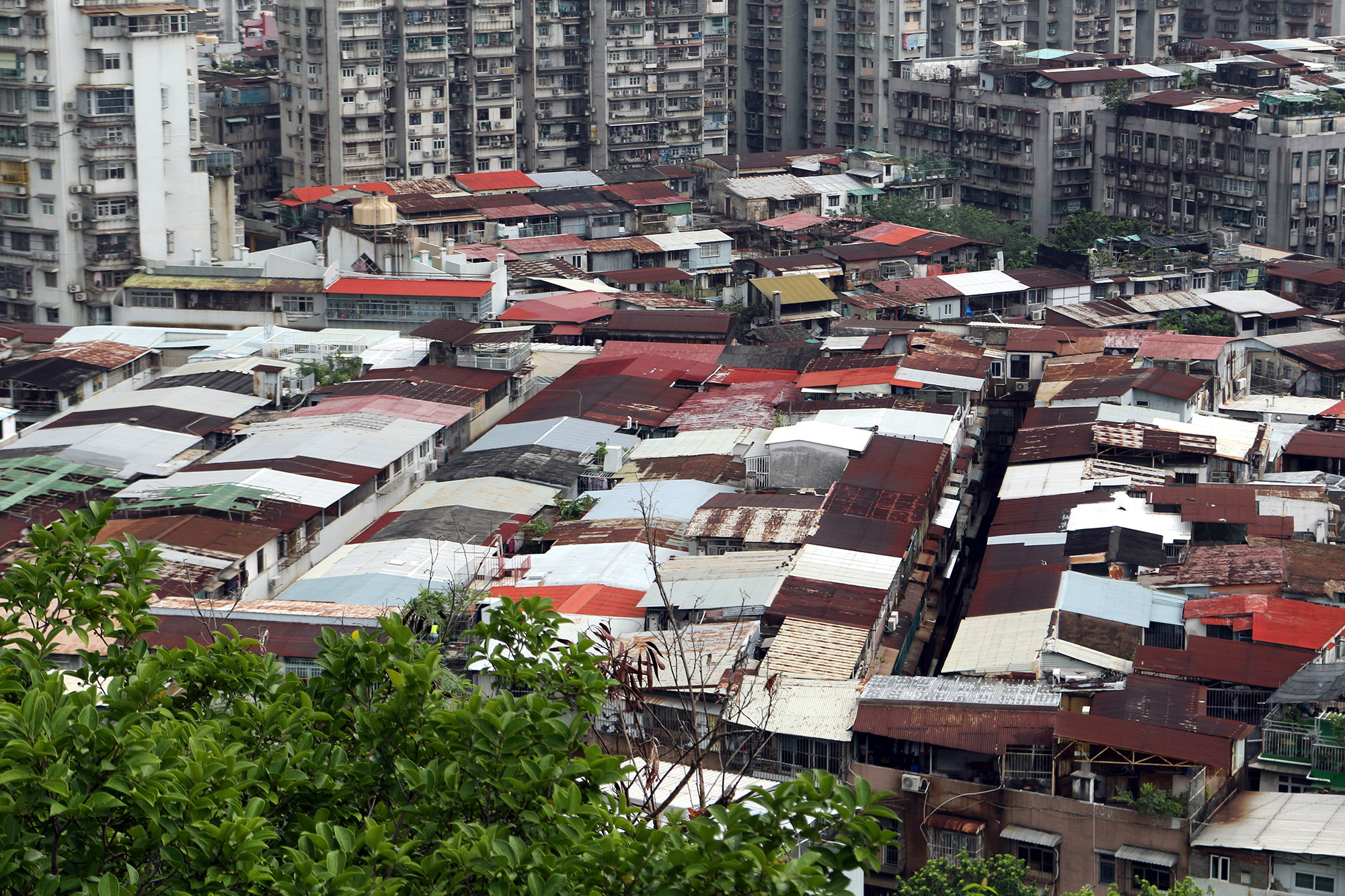
Poverty eradication
Overview
Targets and Indicators

1.1
By 2030, eradicate extreme poverty for all people everywhere, currently measured as people living on less than $1.25 a day
1.1.1
Proportion of the population living below the international poverty line by sex, age, employment status and geographical location (urban/rural)

1.2
By 2030, reduce at least by half the proportion of men, women and children of all ages living in poverty in all its dimensions according to national definitions
1.2.1
Proportion of population living below the national poverty line, by sex and age
1.2.2
Proportion of men, women and children of all ages living in poverty in all its dimensions according to national definitions

1.3
Implement nationally appropriate social protection systems and measures for all, including floors, and by 2030 achieve substantial coverage of the poor and the vulnerable
1.3.1
Proportion of population covered by social protection floors/systems, by sex, distinguishing children, unemployed persons, older persons, persons with disabilities, pregnant women, newborns, work-injury victims and the poor and the vulnerable

1.4
By 2030, ensure that all men and women, in particular the poor and the vulnerable, have equal rights to economic resources, as well as access to basic services, ownership and control over land and other forms of property, inheritance, natural resources, appropriate new technology and financial services, including microfinance
1.4.1
Proportion of population living in households with access to basic services
1.4.2
Proportion of total adult population with secure tenure rights to land, (a) with legally recognized documentation, and (b) who perceive their rights to land as secure, by sex and by type of tenure

1.5
By 2030, build the resilience of the poor and those in vulnerable situations and reduce their exposure and vulnerability to climate-related extreme events and other economic, social and environmental shocks and disasters
1.5.1
Number of deaths, missing persons and directly affected persons attributed to disasters per 100,000 population
1.5.2
Direct economic loss attributed to disasters in relation to global gross domestic product (GDP)
1.5.3
Number of countries that adopt and implement national disaster risk reduction strategies in line with the Sendai Framework for Disaster Risk Reduction 2015-2030
1.5.4
Proportion of local governments that adopt and implement local disaster risk reduction strategies in line with national disaster risk reduction strategies

1.a
Ensure significant mobilization of resources from a variety of sources, including through enhanced development cooperation, in order to provide adequate and predictable means for developing countries, in particular least developed countries, to implement programmes and policies to end poverty in all its dimensions
1.a.1
Total official development assistance grants that focus on poverty reduction as a share of the recipient country’s gross national income
1.a.2
Proportion of total government spending on essential services (education, health and social protection)

1.b
Create sound policy frameworks at the national, regional and international levels, based on pro-poor and gender-sensitive development strategies, to support accelerated investment in poverty eradication actions
1.b.1
Pro-poor public social spending
Progress and Info
Global poverty reduction is virtually at a standstill. Around 9 per cent of people worldwide lived in extreme poverty in 2022. Working poverty affected 244 million workers in 2024. While the milestone of half of the world’s population having social protection has now been reached, low-income countries have shown almost no improvement since 2015. Inequality within and between countries continues to hinder poverty reduction, and the poorest are often left behind in periods of recovery. Inclusive and sustained economic growth, particularly in low-income countries and fragile settings, remains critical to reversing current trends. Accelerating progress towards a poverty-free world will require the strengthening of social protection systems and the mobilization of greater international resources to help countries to recover from the stalled progress of recent years. The United Nations, in collaboration with the World Bank and other partners, works to address structural inequalities, reduce poverty and increase social protection coverage. The Food and Agriculture Organization of the United Nations is providing secretariat services to the Global Alliance against Hunger and Poverty, which was launched in 2024 under the presidency of Brazil of the Group of 20, in order to mobilize coordinated global action and investment in support of poverty reduction in the most vulnerable countries.
Target 1.1 - The latest data showed that 9 per cent of the global population lived in extreme poverty in 2022, which represents a small decrease from 10.5 per cent in 2015. If current trajectories persist, 7.3 per cent of the world’s population will still live in extreme poverty in 2030. In 2024, 6.9 per cent of the employed population, 244 million workers, lived below the international poverty line of $2.15 a day (adjusted for purchasing power parity).
Target 1.3 - For the first time, in 2023, more than half of the world’s population (52.4 per cent) was covered by at least one social protection benefit, up from 42.8 per cent in 2015. A total of 3.8 billion people remain unprotected. High-income countries are edging closer to universal coverage (85.9 per cent). In contrast, the coverage rate of 9.7 per cent in low-income countries has hardly increased since 2015.
Target 1.4 - 23. As of 2022, two thirds of the global population believe they have secure land tenure, yet only 43 per cent of adults around the world, and just 15 per cent in sub-Saharan Africa, possess official land tenure documents. As a result, nearly 1.4 billion adults in developing regions remain excluded from formal land markets, mortgage-based finance and legal protections for their land rights. While women account for 51 per cent of those who feel secure in their tenure, only 24 per cent hold legal land documents.
Target 1.a - In 2022, across approximately 100 reporting countries, government spending on essential services averaged 50 per cent of total expenditures. Advanced economies allocated 61 per cent, while emerging market and developing economies spent 43 per cent.
Target 1.b - Of the 133 countries for which data are available for the period 2009–2022, the proportion of social spending (health, education and direct transfers) that benefited the poorest 20 per cent of the population ranged from 10 to 39 per cent. The average was 26 per cent.
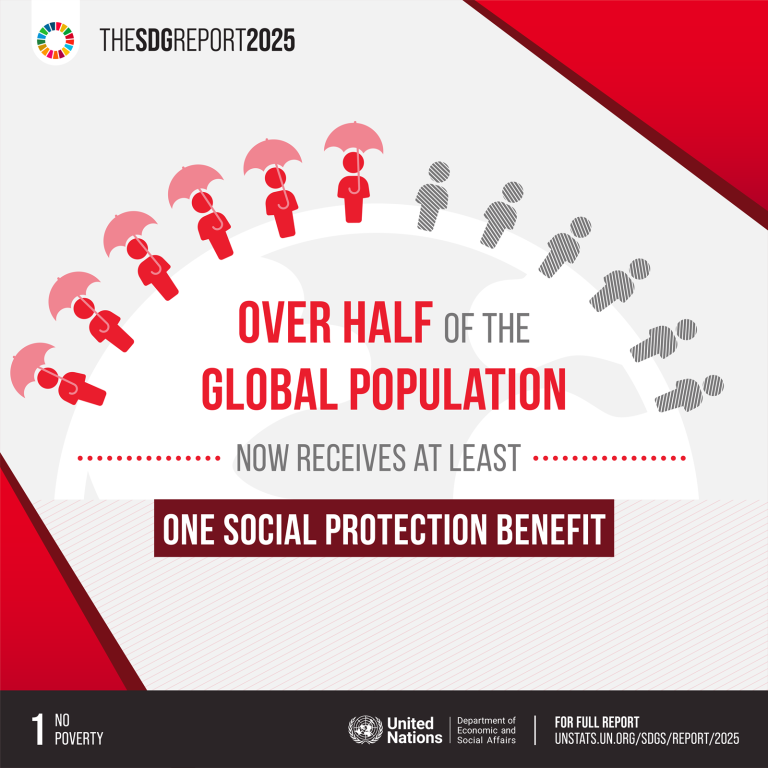
For more information, please visit: https://unstats.un.org/sdgs/report/2025/
More details on SDG 1 in 2025: https://unstats.un.org/sdgs/report/2025/Goal-01/
The 2025 Extended Report on SDG 1 could be found here: https://unstats.un.org/sdgs/report/2025/extended-report/Extended-Report-2025_Goal-1.pdf



